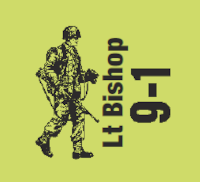
Last weekend I attended the Heroes ASL tournament. It was a great event hosted by Pete Phillipps at the Headlands Hotel in Blackpool. The hotel and staff were excellent, and the food was amazing, all at an affordable price. It is also worth noting the Bounding Fire ASL tournament is at the same venue. I will definitely return to one of these tournaments.
While there, I was watching a game between Ian Ainsworth and Matt Ellis. During their game, an example came up which fit right in with this series. It was interesting since it so accurately details the fickle nature of Infantry versus AFV combat and the odds involved.
A Momentary Diversion
I can’t recall if I have spoken about a “mission kill” before this. I know it is in my mind when speaking about Infantry versus AFV combat. A “mission kill” is not the same thing as eliminating the enemy. A “mission kill” is anything that stops a counter from fulfilling its intended mission (in game terms, the VC). Eliminating the AFV can be a mission kill too, but it is not the only path. If the VC requires a mobile AFV with Functioning MA at the game end, immobilizing the AFV is a “mission kill”. I bring this up because in the following analysis, we are going to specify the odds in terms of a “mission kill” and not in terms of “eliminating” the AFV.
The Scenario
Ian and Matt were playing ROMA 2 Second Hand News. This interesting scenario from Pete Shelling features German troops supported by two StuG IIIs. Opposing them are some chasing Italians and blocking Partisans. By SSR, the Partisans have MOL capability. The German VPs are based on exit VP and/or Control of some specific Building Locations. The Germans gain EVP normally for vehicles exited off the North edge.
Our Example

During the game, Matt made a bid to slip one of his StuGs past the blocking Partisans. Ian had to decide whether to attempt a MOL attack or Street Fighting attack. Ian opted for the Street Fighting attack. Let’s see why.
To qualify for a MOL attack, the Partisan MMC must be at Point Blank or Triple Point Blank range. If it is in range, then it must make a successful MOL Check dr ≤ 3. Assuming it succeeds, the MOL has a Basic TK# of 6. Here, the StuG was Non-Stopped and a Moving Target for a -2 Modifier to the Basic TK#. Taken as a whole, Ian had about an 8.5% chance of getting a mission kill or better against the StuG (50% availability * 16.667% chance to roll <= an Original TK DR 4).
Let’s look at the Street Fighting chances. First, the Partisan MMC must pass a Pre-AFV Advance/Attack Task Check (PAATC) to attack the AFV. The Partisan successfully passed its PAATC. The base Close Combat Value (CCV) for an MMC is 5. There is a -1 DRM for Street Fighting. There is another -1 DRM because the AFV has no Manned/Usable MG. Finally, there is a +2 DRM as the StuG is Non-Stopped. Taken as a whole, Ian had about a 16% chance to get a mission kill (58.33% to pass a PAATC ≤ 7, 27.78% roll ≤ the MMC’s CCV of 5).
I bring this example up because it clearly highlights how knowing your options can make a big difference. By knowing the rules, Ian nearly doubled his chances for a mission kill. During the actual course of play, Ian successfully eliminated the StuG, making it nearly impossible for Matt to fulfill the VC based on his earlier losses.
Conclusion
I hope this quick example helps to see that ASL is a game of options. Some are better than others, and knowing your choices is often the most important part. Again, as I said in my first article in this series, the odds will rarely be in the Infantry’s favor. They weren’t here either. But Ian doubled his chances by properly applying the rules. As such, this qualifies as a good example. Until next time. – jim


I exchanged an email with Toby Pilling this morning on this article. He mentions one option I hadn’t considered. It is possible to try for the MOL attack first and then CC Reaction Fire. The Subsequent First Fire CC Reaction Fire would lower the MMC’s CCV to 4. Furthermore, a unit already marked with a First Fire counter may not Street Fight (A11.8 ). So the attack against the moving StuG would be a CCV of 4. There is a -1 DRM for no Manned/Usable MG and a +2 DRM for attacking a Non-Stopped AFV. In SFF CCRF, the StuG is affected on an Original CC DR of ≤ 3 (8.33%).
Mathematically, the MOL followed by the CCRF attack would mission kill the StuG 15.97% of the time. Clearly, this is nearly the same odds as the original SF example above.
However, added to this you must weigh the 1 in 6 chance for a unit using a MOL to break. If the original colored die for a MOL attack is a 6, the attacking unit is broken. Taking this into account, Ian definitely made the correct decision.
Thanks to Toby for reaching out and pointing on a path I hadn’t considered. His path creates two chances to roll the dice albeit with a 16% chance of breaking. Still, the math works out and is definitely worthy of consideration. Thanks Toby. — jim